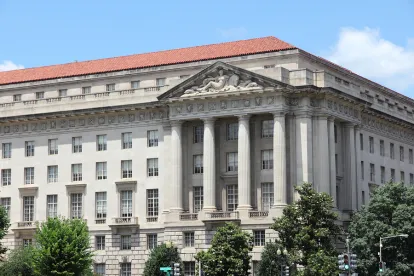It’s déjà vu all over again. Over the course of more than thirty years, EPA and industry partners successfully wound down usage of ozone-depleting chlorofluorocarbons (CFCs) and hydrochlorofluorocarbons (HCFCs) under the Significant New Alternatives Policy (SNAP) in Title VI of the Clean Air Act, enacted following the 1987 Montreal Protocol. Under SNAP, HCFCs and CFCs were largely replaced with hydrofluorocarbons (HFCs) in a wide variety of industrial and commercial uses. But while HFCs are much less harmful to the ozone layer, modern science now recognizes HFCs as extremely potent greenhouse gases, and so it has become necessary to replace the replacements. The international community began addressing HFC usage through the 2016 Kigali Amendment to the Montreal Protocol, and the United States followed suit with legislation at the end of last year.
The 2020 American Innovation and Manufacturing Act (AIM Act) authorizes EPA to promulgate rules to reduce HFC production and usage to 15% of baseline levels by 2036. The Act comes amidst a flurry of activity related to HFCs, including widespread state regulation and legislation. Recently, the EPA proposed a rule to enact the AIM Act’s provisions by establishing a production and consumption allowance system. Meanwhile, a coalition of state and local governments recently petitioned for rulemaking seeking even more robust action against HFCs. Assertive legislation and rulemaking now looks to force HFCs the way of CFCs.
Chlorofluorocarbons and hydrochlorofluorocarbons are classes of chemicals containing atoms of carbon, chlorine, and fluorine which were regularly used in the manufacture of aerosol sprays, blowing agents for foams and packing materials, and as solvents and refrigerants. After discovering that these chemicals were harmful to the ozone layer which protects the planet from the sun’s ultraviolet radiation, the United States signed the 1987 Montreal Protocol on Substances that Deplete the Ozone Layer which requires countries to wind down their usage of CFCs. To implement this requirement, Congress passed Title VI to the Clean Air Act. Under Title VI, 42 U.S.C. § 7671k(a), the EPA established the SNAP program to replace CFCs and HCFCs with non-ozone-depleting alternatives, HFCs. The EPA provided an exhaustive list of permissible CFC-HFC replacements. For example, HFC-134a was identified as an acceptable replacement for CFC-12 for household refrigerators. And so it was—under SNAP, CFC usage plummeted and HFC use dramatically increased.
HFCs are similar to HCFCs and CFCs—hence the ready substitution—but lack chlorine and bromine and so do not have the same ozone-depletion potential. But while HFCs are not (directly) ozone depleting, it has become clear that HFCs are potent greenhouse gases contributing to climate change. In fact, HFCs are such potent greenhouse gases that HFCs have global warming potentials (GWPs) hundreds to thousands of times more potent than carbon dioxide (CO2). Measure for measure, HFCs are some of the most potent greenhouse gases, although HFCs only account for about 1.5% of global emissions weighted by GWP.
The Consolidated Appropriations Act, 2021, Pub. L. No. 116-260, includes the AIM Act, section 103(e) of which authorizes the EPA to promulgate rules to reduce HFC production and use by 85% in fifteen years by issuing production and consumption allowances. Consumption and production is already targeted for a 10% reduction from baseline in 2020-2023. Calculating the baseline and establishing a system of production and consumption allowances is left to EPA to promulgate by rule.
Recently, the EPA issued a proposed rule to calculate the baselines and establish production and allowance mechanisms. Under this proposal, the EPA would establish an allowance system for the production and consumption of HFCs modeled on its prior success drawing down CFCs. In this, the EPA would use exchange value equivalents (EVe) which is the exchange value assigned by Congress specific to each HFC—these exchange values match the 100-year GWP for each gas established by the Intergovernmental Panel on Climate Change—multiplied by the weight of the pure gas. To illustrate, 1 kg of HFC-23, exchange value of 14,800, is 14,800 kgEVe or 14.8 MTEVe (metric tons of EVe) whereas 1 kg of HFC-143 (exchange value of 353) is only 0.353 MTEVe.
The formulas to calculate the production and consumption baselines are provided by statute: 2011-2013 HFC production levels weighted by exchange value plus 15% of the 1989 HCFC EV-weighted production and 0.42% of the 1989 CFC EV-weighted production level. EPA has already incidentally collected most of these values and estimates a baseline production allowance of 375 million MTEVe (MMTEVe) and 299 MMTEVe for consumption, to be reduced according to the schedule provided by the AIM Act.
By issuing allowances denominated in MTEVe, EPA’s proposal would provide market flexibility in meeting these drawdown targets. The EPA indicates it is on schedule to issue the allowances for 2022 by October 1, 2021. But that’s not fast enough for some—a coalition of state and local governments petitioned EPA for rulemaking on July 15 seeking more aggressive action against HFCs.
In the petition, a coalition led by the State of California and the California Air Resources Board (CARB) asks EPA to use its new authority under the AIM Act to reinstate its prior attempt at regulating HFCs under Section 612/SNAP, an effort which had previously been rejected by the courts in Mexichem Fluor, Inc. v. EPA, 866 F.3d 451 (D.C. Cir. 2017). CARB also seeks to have the EPA promulgate additional regulations modeled on CARB’s own and to reinstate the refrigerant management requirements for HFCs that were previously part of EPA’s regulations under the Clean Air Act’s Section 608 Refrigerant Management Program. Several industry participants and trade groups have filed similar petitions, seeking a streamlined approach to HFCs between the EPA and CARB. EPA has not yet responded.
California’s petition joins a growing chorus of private and government voices seeking to aggressively move away from HFCs and it complements a growing body of state regulation. California and CARB have already adopted regulations to manage HFC emissions in refrigeration and foam end-uses, and are currently considering additional rules. California is joined by Maine, Washington, Virginia, Delaware, Massachusetts, Maryland, and more.
We can expect that this is only the tip of the iceberg for HFCs. As the climate continues to worsen and extreme weather becomes the norm, pressure to address HFCs and other greenhouse gas emissions will only mount. Squire Patton Boggs will continue to monitor EPA’s enforcement of the AIM Act and state and federal regulation of HFCs.




 />i
/>i

